Needing help to decide on induction range - Kenmore vs Frigidaire
qzuelic
8 years ago
Featured Answer
Sort by:Oldest
Comments (10)
qzuelic
8 years agoRelated Discussions
I like my Frigidaire induction range! Thank you.
Comments (15)I watched the "hybrid" video and am not sure what to make of the noise level. It seemed very pronounced when PB (power boost) was dialed in. It seemed to almost disappear when the presented dialed the setting down below 7.5. I found the humming-buzz really annoying. But, as a professional videographer, I also had to wonder how much of the noise level was an artifact of holding an inexpensive consumer video camera close to the pots with no way to disable the audio auto gain controls (AGC). What puzzles me is that the buzzing seemed to be partially drowned out by the sound of the water boiling. The sound of the water boiling seemed seemed much louder to me than the sound of boiling water that I hear in my own kitchen. Audio AGC ramps up the recording volume when things are really quiet and dials it down as the noise level goes up. It can seriously exaggerate relative sound levels. The presenter did mention that he heard the noise and said (as others have in commenting on the KA induction units) that you don't hear it when the range fan is on. That suggests to me that the induction modules on that Frigidaire cooktop are indeed noisy though perhaps not a noisy as it might have seemed from the video. I've got a portable countertop induction unit (Max Burton 6200) which produces a bit of a ringing-humm when set to high with smaller pans. It is at a frequency that I personally find annoying, but it goes away as the pan heats up and it is nowhere near as loud as the level seemed in that video. I'll be interested to hear what angiebangie reports....See Morefagor vs ge vs kenmore for 36 inch induction
Comments (6)Power levels are hard to decipher because there is a lot of bad information out there, including manufacturer's web sites. In case of Diva, I found their hard copy most accurate (confirmed with the company). Assuming you have the right numbers, then simply look at the wattage. Most of these machines are around 90% efficient so that number can be compared reasonably between different units. I like to see 3,500 watts so that it is able to comfortably exceed the power of the best gas cooktops (equiv. to 30,000+ BTUs). So try to find at least one hob with this power rating. But also make note of where it is. Some put this in the back which for our use, is not optimal as we use front burners most. The second issue is the number of steps and how easy it is to jump to a setting. Having to select a hob and then change its setting is way, way too slow. So make sure each hob has its own dial. And if it has a lot of steps, see if it has a quick way to jump to one of the settings as holding the up/down button for a while is also slow in my book. We never cook with ever burner on full blast so power sharing is fine in our book and we could care less about the total power the thing puts out for all the hobs combined. I am not a fan of "power boost" as that is a temporary measure and from what I have read, cannot be applied continuously. So I would look at the power for a hob, without powerboost....See MoreNeed help deciding on range: mid-range or high-end?
Comments (39)So glad to come across this post. I am in nearly the same position. A 30" gas Kenmore Elite is supposed to show up next week and I am not excited! Nearly all my research on the Kenmore was positive and price wise it was good. I wanted a 30" gas burner, convection oven, slide in. Reading not so good reviews on the GE Cafe or any others such as KA or Electrolux (and and a significant up in price from the Kenmore) - sent me to the Kenmore. But honestly I don't trust the back control panel to last long & really don't like the look or need the features. I just want to turn the stove and burners on and off. We seriously considered the Bertazzoni but the oven was way too small (it is very pretty and basic functioning) and next thing we know are looking at Wolf for more than 3x the price of the Kenmore! It is amazing how you can mentally upgrade. We love to cook but spent the last 4 years with an ancient hotpoint that only had three functioning burners and was fine (my husband not so much :) I am glad to hear good things about the Cafe & others. Any more input on those 30" slide in "mid range" stoves - KA, Electrolux, GE - would be wonderful. And I am going to check out the NXR. Thanks....See MoreNeed help deciding - Single Induction or Double Non-Induction range
Comments (16)A 10" round pot over two 7" induction elements isn't likely to work well, and likely won't hit both pot sensors as well, so literally wouldn't work. Check the manual for whether you can bridge the elements with a double griddle. I'm guessing that you probably can. Also, make sure that each element has at least 17 power settings (1-9 with half steps). I've heard that some ranges only have 10, and that's not sufficient for a good cooking experience. Even more important than size is power output, and also power sharing since you're talking multiple pots. Make sure the outputs will work for you. A great big pot will work on a smaller element, but it'll have a hot spot. If you have thin enamelled steel, or carbon steel (which is usually only found on shallower pans), you're more likely to get rapid response. Next would be a high quality designed for induction clad steel. Are all of your big pots good on induction? You might have to invest in some new ones anyway. I LOVE my 11" element. My cooktop is 24" wide with the 11" double ring, a medium sized one and a small one. The only time that's not big enough is when I have a couple dozen guests and the chicken soup in one stock pot with the matzah balls in another, and I have one on the 15" gas cooktop. For spaghetti, for the family, a three quart pot on my medium induction element is fine. I have a few pots that I make spaghetti sauce in, but they're all the size of the ring at the base. I'm more likely to package it up for the freezer, and change to a smaller pot to heat the portion for dinner, however, so I don't have to deal with more work later. So... I think you'd be fine simmering your sauce in your big pot, and perhaps using an 8" steel pot for the pasta. Or something like that. Compared to the price of a new range, a couple hundred dollars for a few necessary cookware additions doesn't sound tragic. For boiling pasta, however, if you can get your current pot on the element without banging into your sauce pot, even if it's a little off center, it should be fine. It's not like you're cooking something on the pot where hot spots really matter. You're just heating the water that's cooking the pasta. Every new piece of cooking equipment, whether it's a cooktop or oven or small appliance, has a learning period. Each has its quirks. Adapting to those is necessary. Relearning your timing is essential. It's not hard if you don't resist it. Just be mindful and notice how things are working for the first month or two. It'll turn out fine in the end....See Morejwvideo
8 years agoqzuelic
8 years agoqzuelic
8 years agojwvideo
8 years agoqzuelic
8 years ago
Related Stories
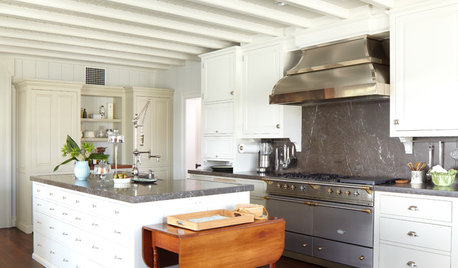
KITCHEN DESIGNHow to Find the Right Range for Your Kitchen
Range style is mostly a matter of personal taste. This full course of possibilities can help you find the right appliance to match yours
Full Story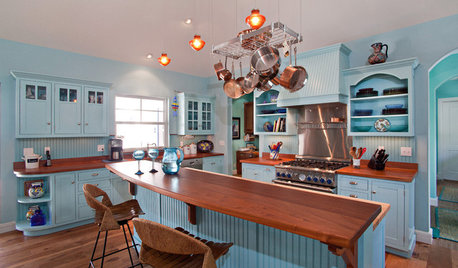
KITCHEN DESIGNHere's Help for Your Next Appliance Shopping Trip
It may be time to think about your appliances in a new way. These guides can help you set up your kitchen for how you like to cook
Full Story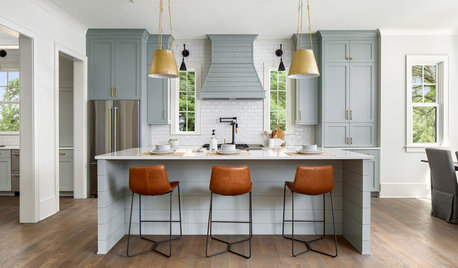
MOST POPULARHow Much Room Do You Need for a Kitchen Island?
Installing an island can enhance your kitchen in many ways, and with good planning, even smaller kitchens can benefit
Full Story
KITCHEN APPLIANCESLove to Cook? You Need a Fan. Find the Right Kind for You
Don't send budget dollars up in smoke when you need new kitchen ventilation. Here are 9 top types to consider
Full Story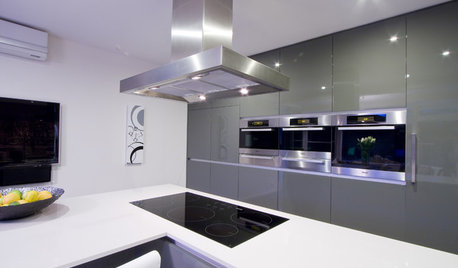
KITCHEN APPLIANCESFind the Right Cooktop for Your Kitchen
For a kitchen setup with sizzle, deciding between gas and electric is only the first hurdle. This guide can help
Full Story
HOUSEKEEPINGHow to Clean Your Range and Oven
Experts serve up advice on caring for these kitchen appliances, which work extra hard during the holidays
Full Story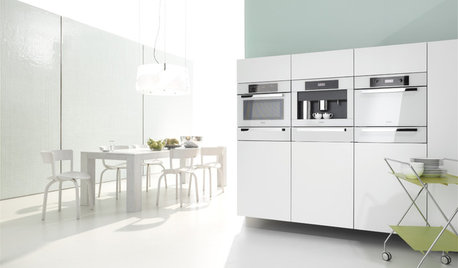
KITCHEN DESIGNWhite Appliances Find the Limelight
White is becoming a clear star across a broad range of kitchen styles and with all manner of appliances
Full Story
KITCHEN DESIGNWhat to Know When Choosing a Range Hood
Find out the types of kitchen range hoods available and the options for customized units
Full Story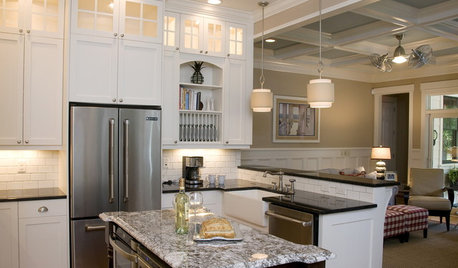
KITCHEN DESIGNStay Cool About Picking the Right Refrigerator
If all the options for refrigeration leave you hot under the collar, this guide to choosing a fridge and freezer will help you chill out
Full Story
KITCHEN DESIGNHow Much Does a Kitchen Makeover Cost?
See what upgrades you can expect in 3 budget ranges, from basic swap-outs to full-on overhauls
Full StorySponsored
Custom Craftsmanship & Construction Solutions in Franklin County




stir_fryi SE Mich